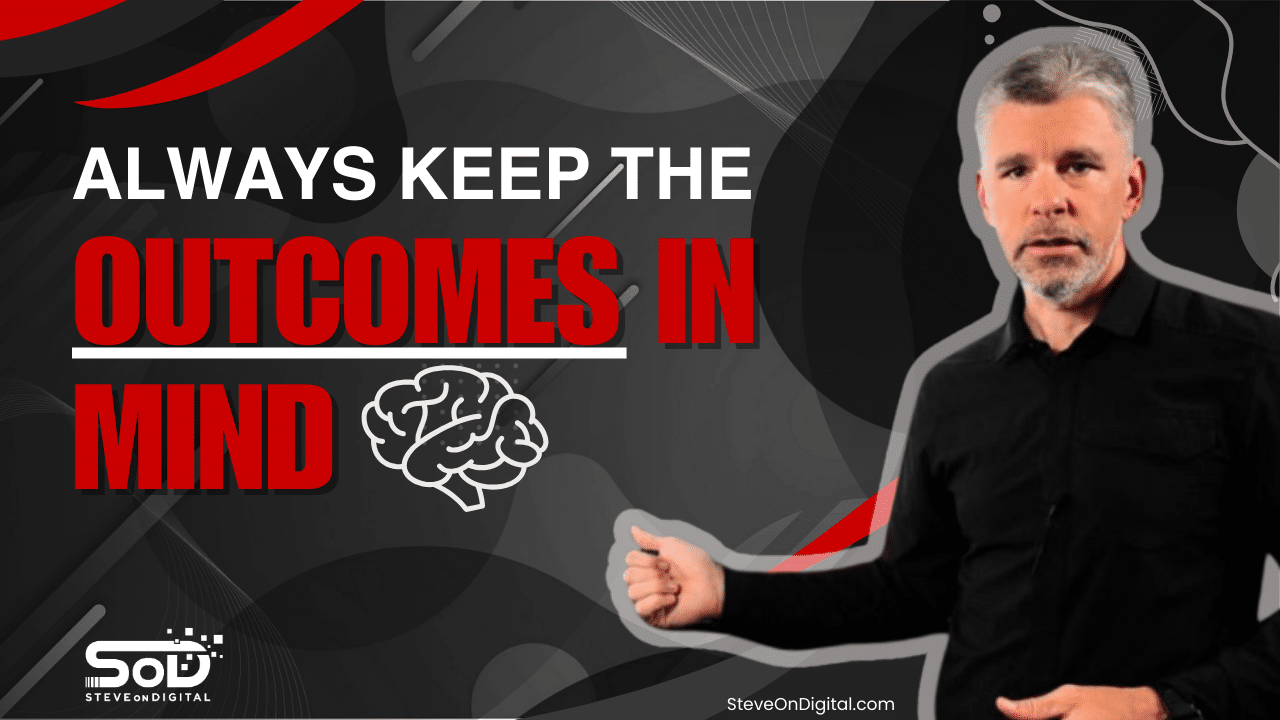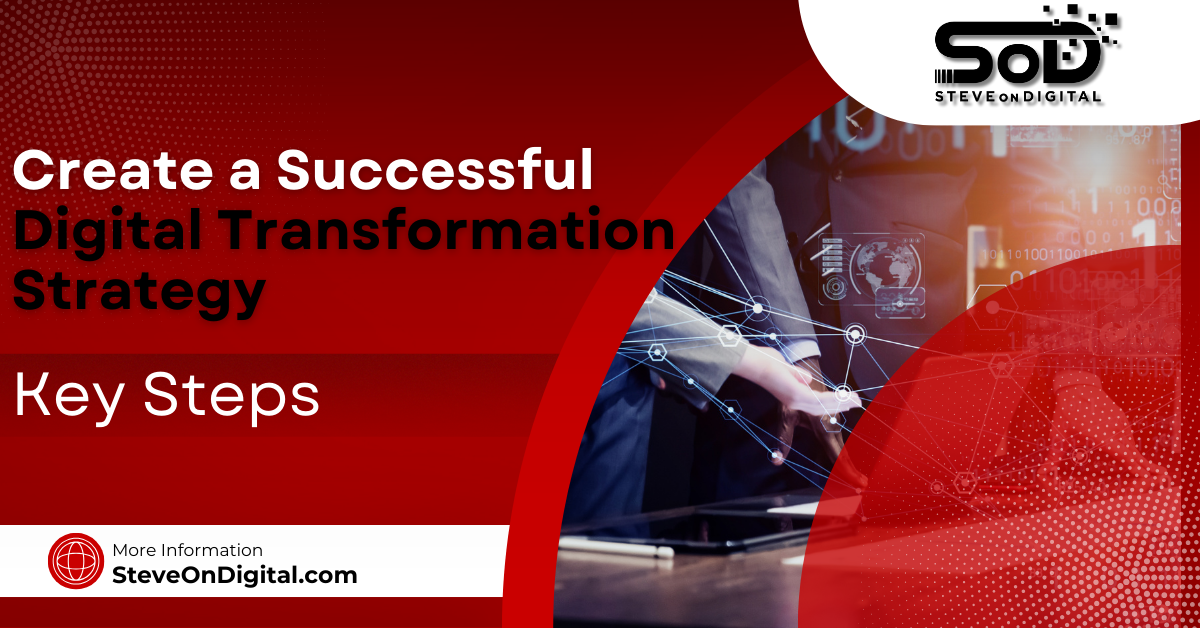Aligning IT with business goals is crucial for any organization aiming to succeed. By ensuring IT initiatives align with business objectives through business IT alignment as a strategic approach, companies can boost performance, drive innovation, and achieve growth. This alignment bridges the gap between technology and strategy, helping to deliver tangible business outcomes.
Understanding business goals and objectives is the first step. Goals are the company’s long-term ambitions, like increasing market share or enhancing customer satisfaction. Objectives are specific, measurable steps that help achieve these goals. By aligning IT with these elements, businesses can optimize operations, improve efficiency, and enhance customer satisfaction.
I’m Steve, a digital transformation expert with a strong background in electrical engineering, an MBA, and a master’s in Project Management. I excel at helping SMEs navigate the digital landscape with practical insights. Let’s begin!
Understanding Business Goals and Objectives
Defining business goals and objectives is the first step toward successful IT alignment. Goals are the overarching ambitions of a company, such as increasing market share or enhancing customer satisfaction. Objectives are specific, measurable steps that help achieve these goals.
Defining Business Goals
Business goals represent the long-term vision of a company. They provide direction and set the stage for strategic planning. For instance, a goal might be to become the market leader in a specific industry within five years.
Identifying Business Objectives
Objectives are more specific than goals. They are the actionable steps needed to reach those broader goals. For example, increasing annual revenue by 15% or reducing customer churn by 10% in the next year are clear objectives that support the overall business goals.
The Role of IT in Achieving Business Outcomes
Information technology plays a pivotal role in driving business outcomes by aligning IT with business strategy to ensure that IT systems effectively support overall business goals. Here’s how IT can influence key business outcomes:
Enhancing Customer Satisfaction
IT solutions can significantly improve the customer experience. For instance, implementing a robust CRM system can help manage customer interactions more effectively, leading to increased satisfaction and loyalty. According to a survey, companies with strong customer engagement strategies see a 55% higher customer retention rate (Planview).
Improving Operational Efficiency
Streamlining business processes through automation and advanced IT systems can lead to significant cost savings and productivity gains. For example, integrating ERP systems can optimize supply chain management, resulting in a 20% reduction in operational costs (ClearPoint).
Driving Innovation and Growth
IT enables businesses to innovate by providing tools and platforms that support the development of new products and services. Companies that prioritize IT alignment see a 77% increase in their ability to execute new growth strategies (ClearPoint).
Developing an IT Strategy Aligned with Business Priorities
Aligning IT strategies with business priorities is crucial for achieving success in today’s digital age. This section outlines a step-by-step guide on how to create an IT strategy that aligns seamlessly with the overall business strategy.
Assessing Current IT Capabilities
Before developing an IT strategy, it is essential to view it business alignment as an ongoing project that requires constant evaluation and communication between IT and business departments. This involves understanding the current capabilities and identifying gaps that need to be addressed.
Steps to Assess Current IT Capabilities:
- Inventory of IT Assets: Create a comprehensive list of all IT assets, including hardware, software, and network components.
- Evaluate IT Performance: Analyze the performance of current IT systems in terms of speed, reliability, and scalability.
- Identify IT Gaps: Determine areas where current IT capabilities fall short of meeting business needs. This could involve outdated hardware, software inefficiencies, or network vulnerabilities.
Evaluating IT capabilities helps in understanding where the organization stands and what improvements are necessary to support business objectives.
Setting IT Goals that Support Business Objectives
Establishing IT goals that align with business objectives is essential for achieving strategic alignment. These goals should be specific, measurable, achievable, relevant, and time-bound (SMART).
Steps to Set IT Goals:
- Understand Business Objectives: Clearly define the business objectives that IT initiatives need to support.
- Set SMART IT Goals: Ensure that IT goals are specific, measurable, achievable, relevant, and time-bound.
- Align IT Goals with Business Priorities: Make sure that each IT goal directly supports a business objective. For example, if a business objective is to improve customer satisfaction, an IT goal could be to implement a new CRM system.
By setting aligned IT goals, you ensure that IT efforts are focused on achieving business outcomes.
Creating an IT Roadmap
An IT roadmap outlines the steps necessary to implement IT initiatives that align with business goals. It provides a clear path for achieving IT and business alignment.
Steps to Create an IT Roadmap:
- Define Key Milestones: Identify major milestones that need to be achieved to meet IT goals.
- Develop a Timeline: Create a timeline for achieving these milestones, considering resource availability and dependencies.
- Assign Responsibilities: Allocate tasks and responsibilities to specific teams or individuals.
- Monitor Progress: Regularly track progress against the roadmap and make adjustments as needed.
Creating a detailed IT roadmap helps in planning and executing IT initiatives effectively, ensuring they contribute to business success.
| Step | Description |
| Define Key Milestones | Identify major milestones needed to achieve IT goals. |
| Develop a Timeline | Create a timeline considering resource availability and dependencies. |
| Assign Responsibilities | Allocate tasks to specific teams or individuals. |
| Monitor Progress | Regularly track progress and adjust the roadmap as needed. |
Engaging Business Leaders and Stakeholders
Involving business leaders and stakeholders in the IT alignment process is vital for gaining support and ensuring that IT initiatives meet business needs. It is essential to invite business leaders to engage in conversations about daily challenges and objectives, as this collaboration fosters a better understanding of business needs and enhances the alignment of IT with those needs.
Building Trust with Business Leaders
Establishing strong relationships and trust with IT leaders and business leaders is crucial for aligning technology strategies with business objectives.
Strategies to Build Trust:
- Transparent Communication: Maintain open and honest communication with business leaders about IT initiatives and their progress.
- Involve Leaders in Decision-Making: Include business leaders in key IT decisions to ensure their needs and concerns are addressed.
- Demonstrate IT Value: Regularly showcase how IT initiatives contribute to achieving business objectives.
Building trust with business leaders ensures their support and involvement in IT projects.
Facilitating Open Communication
Maintaining transparent and ongoing communication between IT and business teams is essential for successful alignment.
Steps to Facilitate Open Communication:
- Regular Meetings: Hold regular meetings between IT and business teams to discuss progress and address any issues.
- Shared Platforms: Use shared communication platforms to ensure everyone is on the same page.
- Feedback Mechanisms: Implement feedback mechanisms to gather input from business teams on IT initiatives.
Open communication helps in ensuring that IT and business teams work together towards common goals.
Ensuring IT and Business Processes Integration
Integrating IT processes with business operations is key to achieving better alignment and efficiency.
Aligning IT Projects with Business Processes
IT projects should be designed to support and enhance business processes, ensuring they contribute to business goals.
Steps to Align IT Projects:
- Understand Business Processes: Gain a thorough understanding of existing business processes.
- Identify IT Needs: Determine how IT can support and improve these processes.
- Integrate IT Solutions: Implement IT solutions that enhance business processes and contribute to business goals.
Aligning IT projects with business processes ensures that IT efforts are focused on improving business performance.
Leveraging Technology for Business Process Improvement
Technology can be a powerful tool for enhancing and optimizing business processes.
Ways to Leverage Technology:
- Automation: Implement automation to streamline repetitive tasks and improve efficiency.
- Data Analytics: Use data analytics to gain insights into business performance and make informed decisions.
- Cloud Solutions: Adopt cloud solutions for greater flexibility and scalability.
Leveraging technology helps in optimizing business processes, leading to better alignment and increased efficiency.
Measuring the Success of IT and Business Alignment
To ensure that IT and business alignment is effective, it’s essential to measure its success using specific metrics and Key Performance Indicators (KPIs). These metrics help in evaluating how well IT initiatives support business goals and identifying areas for improvement.
Defining Key Performance Indicators (KPIs)
KPIs are crucial for assessing the success of IT alignment. They provide quantifiable measures that indicate whether IT initiatives are achieving desired business outcomes. Here are some relevant KPIs:
- Customer Satisfaction Score (CSAT): Measures the level of customer satisfaction with IT services. Higher scores indicate better alignment with customer expectations and business goals.
- Return on Investment (ROI): Evaluates the financial return on IT investments. A high ROI suggests that IT initiatives are effectively contributing to business value.
- Operational Efficiency: Assesses improvements in business processes due to IT interventions, such as reduced processing times or cost savings.
- Service Quality: Monitors the reliability and performance of IT services. Metrics like uptime, incident resolution time, and system availability are key indicators.
- Employee Productivity: Measures how IT tools and systems enhance employee productivity, reflected in metrics like task completion rates and time saved.
Using these KPIs, businesses can gauge the impact of IT on achieving business objectives.
Monitoring and Evaluating Performance
Continuous monitoring and evaluation are vital for maintaining IT and business alignment. Here’s a framework for ongoing assessment:
- Regular Performance Reviews: Conduct quarterly reviews to assess progress against KPIs. This helps in identifying trends and areas needing attention.
- Feedback Mechanisms: Implement feedback loops where employees and customers can provide input on IT services. This can highlight issues and opportunities for improvement.
- Dashboard Reporting: Use real-time dashboards to track KPI performance. These dashboards provide a visual representation of IT effectiveness and business impact.
- Benchmarking: Compare performance against industry standards and best practices to ensure IT initiatives are competitive and aligned with market expectations.
By continuously monitoring and evaluating performance, businesses can make data-driven decisions to optimize IT strategies.
Adapting IT Strategies to Changing Business Needs
IT strategies must be flexible and adaptive to keep pace with evolving business requirements. This adaptability ensures that IT remains aligned with business goals despite market changes.
Responding to Market Changes
Businesses operate in dynamic environments where market conditions can shift rapidly. IT must be able to respond quickly to these changes:
- Agile Methodologies: Adopt agile methodologies for IT projects. This allows for rapid adjustments and iterative improvements.
- Scalable Solutions: Implement scalable IT solutions that can grow with the business. Cloud computing and modular systems are excellent examples.
- Market Analysis: Regularly analyze market trends and customer feedback to anticipate changes and adjust IT strategies accordingly.
Being responsive to market changes helps businesses stay competitive and aligned with their strategic objectives.
Continuous Improvement and Feedback
Ongoing improvement and feedback are essential for sustaining IT and business alignment:
- Kaizen Approach: Adopt the Kaizen philosophy of continuous improvement. Encourage small, incremental changes that collectively lead to significant enhancements.
- Feedback Loops: Establish formal feedback mechanisms where employees can suggest improvements to IT processes and systems.
- Performance Metrics: Continuously track performance metrics and use them to drive improvements. Regularly update strategies based on performance data and feedback.
This focus on continuous improvement ensures that IT strategies evolve in line with business needs.
Building a Collaborative IT and Business Culture
A collaborative culture where IT and business teams work together is crucial for achieving alignment. This culture fosters teamwork, innovation, and shared goals.
Promoting Cross-Departmental Collaboration
Encouraging collaboration between different departments enhances IT and business alignment:
- Integrated Teams: Create cross-functional teams that include members from IT and various business departments. This promotes understanding and cooperation.
- Joint Workshops: Organize workshops and brainstorming sessions to discuss challenges and develop solutions collaboratively.
- Shared Goals: Establish shared goals and KPIs that require joint efforts from IT and business teams to achieve.
Collaboration leads to better problem-solving and innovation, benefiting the entire organization.
Encouraging a Unified Vision
Creating a unified vision that aligns IT and business goals ensures everyone is working towards the same objectives:
- Vision Statements: Develop clear vision statements that articulate the shared goals of IT and business teams.
- Leadership Support: Secure support from business leaders to promote and reinforce the unified vision across the organization.
- Communication Channels: Maintain open communication channels to regularly discuss progress towards the unified vision and address any misalignments.
A unified vision fosters a sense of purpose and direction, enhancing overall business performance.
Overcoming Challenges in IT and Business Alignment
Aligning IT with business goals is not without its challenges. Recognizing and addressing these obstacles is essential for achieving seamless alignment and ensuring that IT initiatives support business objectives effectively.
Addressing Misalignment Issues
Misalignment between IT and business strategies can lead to inefficiencies and missed opportunities. Recognizing and addressing these issues promptly is crucial.
Recognizing Misalignment:
- Lack of Clear Communication: If IT and business teams are not regularly communicating, it can lead to misunderstandings about priorities and objectives.
- Divergent Goals: When IT and business goals are not aligned, IT initiatives may not support the broader business strategy.
- Resource Misallocation: Misalignment often results in resources being directed towards IT projects that do not deliver business value.
Addressing Misalignment:
- Regular Strategy Meetings: Hold regular meetings between IT and business leaders to discuss and align strategies. This ensures both sides understand and support each other’s goals.
- Integrated Planning: Develop integrated business and IT planning processes to ensure that IT projects are directly tied to business objectives.
- Performance Metrics: Use performance metrics that link IT performance with business outcomes. This helps in tracking alignment and making necessary adjustments.
Bridging the Communication Gap
Improving communication between IT and business teams is essential for successful alignment. Here are some tips to bridge the communication gap:
- Establish Clear Communication Channels: Set up regular meetings, use collaborative tools, and create channels where IT and business teams can share updates and feedback.
- Use Common Language: Avoid technical jargon when discussing IT projects with business teams. Instead, use language that is easily understood by all stakeholders.
- Joint Training Sessions: Organize training sessions where IT professionals and business colleagues can learn about each other’s functions, challenges, and goals. This fosters mutual understanding and collaboration.
Case Studies of Successful IT and Business Alignment
Learning from real-world examples can provide valuable insights into how effective IT and business alignment can drive success.
Case Study 1: XYZ Corporation
XYZ Corporation successfully aligned its IT strategy with its business goals, resulting in significant improvements in business performance.
Approach:
- Strategic IT Planning: XYZ Corporation integrated IT planning into its overall business strategy, ensuring that IT initiatives were directly aligned with business objectives.
- Enhanced Customer Experience: By implementing a new CRM system, XYZ Corporation improved customer satisfaction and loyalty, leading to a 20% increase in customer retention rates.
- Operational Efficiency: The company leveraged automation tools to streamline its supply chain processes, reducing operational costs by 15%.
Case Study 2: ABC Enterprises
ABC Enterprises demonstrated the power of IT alignment in driving business growth and innovation.
Approach:
- Agile IT Framework: ABC Enterprises adopted an agile IT framework, allowing for rapid adjustments and continuous improvement in IT initiatives.
- Innovative Solutions: The company implemented advanced analytics tools to gain insights into market trends, enabling proactive decision-making and a 30% increase in market share.
- Cross-Functional Teams: By fostering cross-departmental collaboration, ABC Enterprises ensured that IT projects were well-integrated with business processes, leading to enhanced productivity and innovation.
Future Trends in IT and Business Alignment
Staying ahead of future trends and technologies is crucial for maintaining IT and business alignment.
| Trend | Description |
| Artificial Intelligence | Enhances decision-making, automates processes, and personalizes customer experiences. |
| Internet of Things | Provides real-time data for optimizing operations and improving product quality. |
| Blockchain | Offers enhanced security and transparency for business transactions. |
| Subscription Models | Requires IT systems that support recurring billing and customer management. |
| Remote Work | Demands robust IT infrastructure for security, collaboration, and productivity. |
| Sustainability | Incorporates green technologies to reduce environmental impact. |
Here are some emerging trends to watch:
Emerging Technologies
New technologies are continually reshaping the landscape of IT and business alignment.
- Artificial Intelligence (AI): AI is being increasingly used to enhance decision-making, automate processes, and personalize customer experiences. Businesses adopting AI see improved operational efficiency and better customer insights.
- Internet of Things (IoT): IoT devices provide real-time data that can be leveraged to optimize operations, improve product quality, and enhance customer satisfaction.
- Blockchain: Blockchain technology offers enhanced security and transparency for business transactions, fostering trust and efficiency in supply chain management.
Evolving Business Models
Business models are evolving rapidly, influencing how IT strategies are developed and implemented.
- Subscription-Based Models: Many businesses are shifting to subscription-based models, requiring IT systems that support recurring billing, customer management, and data analytics.
- Remote Work: The rise of remote work demands robust IT infrastructure that ensures security, collaboration, and productivity for remote teams.
- Sustainability: As businesses focus more on sustainability, IT strategies must incorporate green technologies and practices to reduce environmental impact.
Final Thoughts
Aligning IT with business goals is essential for achieving long-term success. By addressing misalignment issues, bridging communication gaps, learning from successful case studies, and staying ahead of emerging trends, businesses can ensure their IT strategies effectively support their objectives. This alignment not only drives business success but also enhances customer satisfaction, operational efficiency, and innovation.





